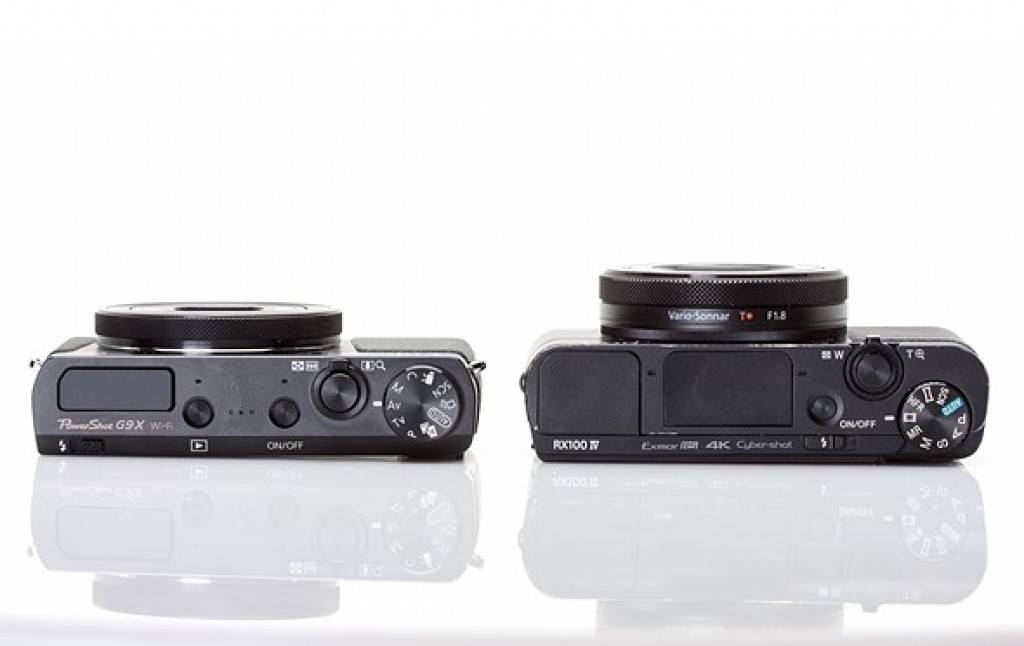
Introduction
I remember very clearly when the Canon PowerShot G9 X arrived in the DPReview offices. I was a fairly recent hire, and myself and another recent hire took the G9 X and the G5 X out to shoot some samples. As a person who still clings to old full frame DSLRs, I got along with the G5 X much more so than with the G9 X. It had way more controls, a good viewfinder, a brighter zoom lens and a real grip. I really liked that camera (and my first field test was done with one), but never really felt any sort of pull toward its smaller sibling. Until recently.

It’s so darn tiny
It was the recent review of the Sony RX100 V which really helped me appreciate the value of having one of these 1″-sensor cameras always in your pocket. I have a lot of respect for folks who can create beautiful and impactful work using a cellphone, but personally, I still like the idea of using a dedicated device. (Of course, this may change in the future – after all, I don’t carry my iPod Classic with me everywhere anymore).

When it comes to skinny jeans, this is a mighty big difference. Though this is an RX100 IV, it is identical to the V in terms of width.
So while the RX100 V was incredibly powerful, I started to wonder whether there was something that could get me close to that level of stills image quality but was even smaller – like, ‘not worry about slipping it into the back pocket of my skinny jeans’ smaller. And then it hit me – the Canon G9 X.
The G9 X is 10mm thinner than the RX100 V (and IV), which doesn’t sound like a ton until you realize that it’s close to a 25% difference. By contrast, my Ricoh GR slides into a pants pocket much easier than the RX100 V, and it splits the difference in width between the two. The Ricoh GR is also within 1mm of width of the original RX100, as well.

Macro performance is pretty good – but it’s best to stop down a bit. Processed to taste in Adobe Camera Raw. 28mm equiv., ISO 125, 1/640, F2.8. Photo by Carey Rose
Most impressive to me? The G9 X is just a couple of milimeters thicker than a PowerShot S95, and that camera’s sensor was pretty tiny in comparison. Technological progress is great.
In any case – when you’re talking about cameras and pockets, every little bit counts.
The interface is well thought out
One thing that has been near-universally covered and largely condemned across the internet is the G9 X’s heavy dependence on its touch interface. There’s only one dial, which is around the lens (and it’s clicked! Thank the maker!), and there’s not even a four-way control pad on the rear. I read time and time again how the interface works out okay, and the screen is of good quality, but that it can be fiddly in menus, playback and for fine adjustment of controls. However, almost everyone missed something incredibly crucial.

JPEGs can be pretty nice out of the G9 X, after you’ve taken time to set them up. I’m not so big a fan of them at defaults. Out-of-camera JPEG with custom color settings and noise reduction set to minimum. 54mm equiv., ISO 800, 1/125, F4.5. Photo by Carey Rose
The G9 X, despite having one less control dial than the RX100 series, is more responsive to set up in actual use. That’s because you can use the zoom toggle, lens control ring and ‘Set’ button to navigate the menus sans-touchscreen. It’s brilliant, fast and once you realize it’s there, easy. There’s another review erroneously stating that you can’t delete an image without using the touchscreen – also wrong. Just hit the ‘Set’ button in playback, hit it again, and use the front ring to confirm deletion. Sweet.
Swipe functions in playback work great, but again, you can use the control ring for that. While you’re shooting, the control ring manipulates the setting that makes the most sense at the time – in aperture-and-shutter priority, it controls those respective values. In Program Auto, it controls exposure compensation. Admittedly, in full manual, it defaults to aperture, which is fine, and though you can add an on-screen soft button to have the ring cycle through other controls, that just means you do have to use the touchscreen to manipulate other values. So it’s not perfect.

Obligatory sunstar photo, processed to taste in Adobe Camera Raw. 28mm equiv., ISO 125, 1/400 sec, F9. Photo by Carey Rose
he ‘slow’ lens isn’t that slow
Okay, well, it sort of is. I mean, it’s a 28-84mm (focal length equivalent) F2.0-4.9 lens, making it slower on the wide end than the first two RX100’s, and on par with them on the long end, but with less reach. But a fun fact – the newest RX100 models with 24-70mm equivalent lenses are slower than this model by the time they’ve zoomed from 24-28mm (they reach F2.5 by 28mm). Of course, if you need 24mm, then this isn’t quite so valuable. I personally find that 28mm is usually wide enough for a walk-around camera, and I actually appreciate the small amount of additional reach (versus a 70mm limit) on the long end more than I expected.

I tried getting an angle to keep that tree from poking out of the top of the house, but obviously I failed. Processed to taste in Adobe Camera Raw. 84mm equiv., ISO 125, 1/640 sec, F4.9. Photo by Carey Rose
Also, I can’t get too upset about this, because I fully expect the ‘slowness’ of the lens is what really makes the G9 X so much thinner than the competition.
The rest
The image quality is predictably good. It uses the same (or very similar) sensor as the RX100 III. It has typically good Canon color response, and though the noise reduction in JPEGs is pretty sloppy, once you crank it down to its lowest setting, it’s not too bad.

The auto white balance is a bit off here, but the tap-to-focus worked great. Out-of-camera JPEG, 28mm equiv., ISO 320, 1/60 sec, F2. Photo by Carey Rose
The built-in pop-up flash is slick and handy, and operationally, the camera feels much snappier than any RX100 – except, of course, burst shooting, but that shouldn’t be a surprise (it manages less than 1fps in Raw). Despite it being the second-cheapest 1″-sensor compact out there (the original RX100, still available new, takes that crown), it feels very well-built and if it matters to you, the red-and-silver design accents around the dials add ‘a touch of class.’ There’s even the lovely detail of having a tripod thread in-line with the center of the lens.
This isn’t a class-leading video camera by any stretch of the imagination, but Canon’s 1080/60p video with optical and digital stabilization continues to impress, though the fact that the control ring can’t be de-clicked limits its application somewhat (albeit the touchscreen allows silent manipulation of some controls). But here’s one thing this camera can do that the Sony can’t – accurate and easy touch-to-focus-and-track in video, even with a ‘lowly’ contrast-detect only system.
That’s a wrap

Here’s hoping the sun doesn’t set on the smallest member of Canon’s revamped G-series. Processed and cropped to taste in Adobe Camera Raw. 28mm equiv., ISO 125, 1/125 sec, F4. Photo by Carey Rose
I continue to be a fan of the G7 X Mark II, and I hope that Canon will bring the improvements seen in that model to the G5 X and G9 X as well. If they can shoehorn 4K video and maybe even better burst performance into those as well, the whole RX100 line will have even more competition – which is never a bad thing.
Updated Sample Gallery
Please do not reproduce any of these images on a website or any newsletter / magazine without prior permission (see our copyright page). We make the originals available for private users to download to their own machines for personal examination or printing (in conjunction with this review), we do so in good faith, please don’t abuse it.
Unless otherwise noted images taken with no particular settings at full resolution. Because our review images are now hosted on the ‘galleries’ section of dpreview.com, you can enjoy all of the new galleries functionality when browsing these samples.

Sourse: dpreview.com









































